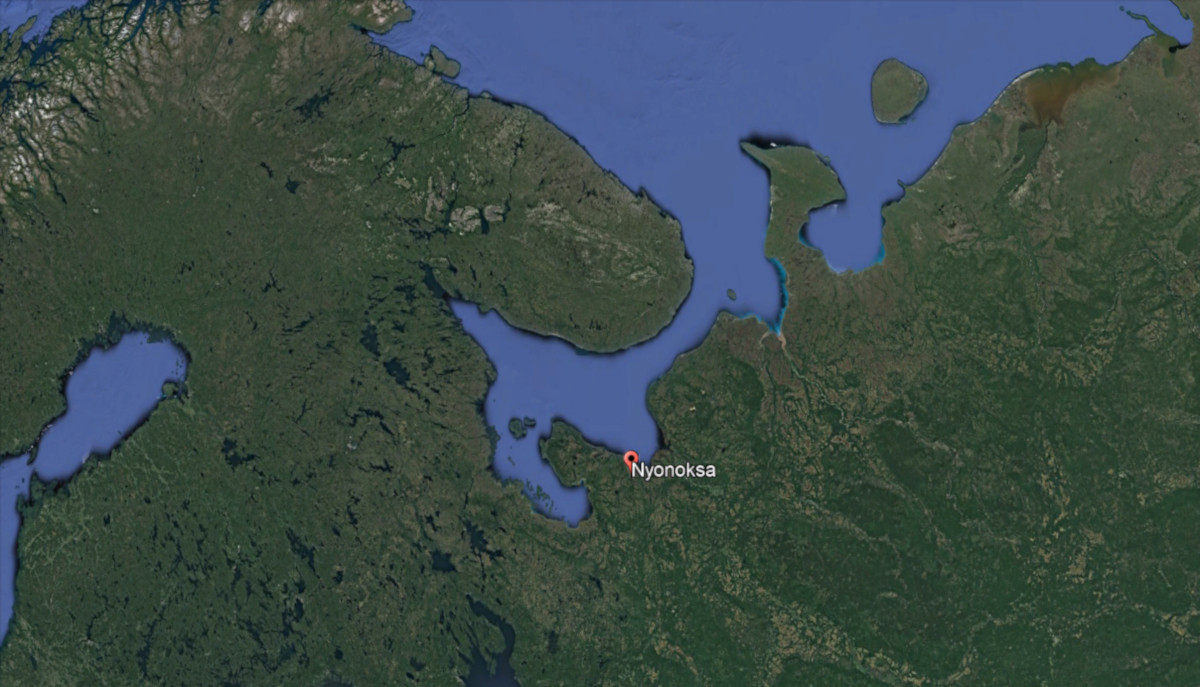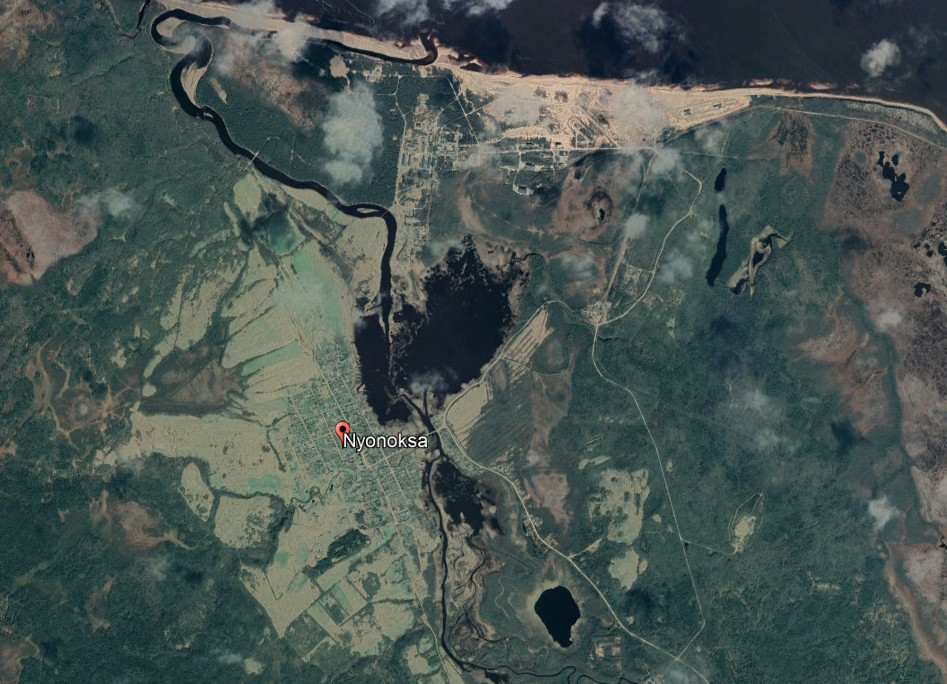Five days after a still very mysterious explosion at a missile test site in northwestern Russia, authorities have announced what they say will be a brief evacuation of a small village nearby, despite saying this was unnecessary in the immediate aftermath of the incident. The announcement comes as evidence mounts that the accident involved a nuclear-powered cruise missile known as Burevestnik.
Reports of the evacuation of the Nyonoksa, which will reportedly last only around two hours, first emerged on Aug. 13, 2019. Igor Orlov, the governor of the northwestern Arkhangelsk region where the village is located, confirmed that residents were set to briefly leave their homes. Approximately 450 people live in Nyonoksa, which sits right up against the edge of the missile test facility where the explosion occured on Aug. 8, 2019.
This is “a routine measure,” Orlov insisted. Russian officials continue to claim that there was no radiation leak from the accident, despite admissions from the country’s main nuclear corporation, Rosatom, that the system that exploded included a nuclear “isotope power source.” Local emergency management authorities had initially issued alerts about a spike in ambient radiation, but then took down those notices and referred all related questions to the Russian Ministry of Defense. On Aug. 8, 2019, Orlov had said there was no need for an evacuation.


The evidence that has emerged so far, which The War Zone has been actively reporting on, has increasingly pointed to an accident during a test involving Burevestnik, also known to NATO as the SSC-X-9 Skyfall, or a separate test article related to that development. On Aug. 12, 2019, U.S. President Donald Trump posted a Tweet that seemed to confirm reports that the U.S. Intelligence Community was increasingly of this view, as well.
Though there is limited information available about Burevestnik, the prevailing theory is that it uses a small nuclear reactor rather than traditional fuel to power a ramjet and give it virtually unlimited range. The inherent hazards and risks in such a design, something The War Zone has written about in detail in the past, make this a particularly controversial program and have led multiple experts to question whether the Russians will ever be able to turn the concept into a practical weapon system.

Of course, the evacuation, in of itself, does not necessarily suggest that the accident is related to Burevestnik. Nyonoksa residents have told local media outlets that they have had to leave in the past over other apparent mishaps at the nearby test facility. One individual reportedly told ArkhangelskOnline about a past incident where a burning piece of debris fell on their home and started a fire.
“They said that there were no changes in the radiation background and there was nothing to worry about,” another unnamed individual explained to ArkhangelskOnline. “And that everything is fine both in our village and there, in the military town. The situation is checked by experts.”
However, it does seem curious that Russia would only evacuate the village now, days after the accident, given the absence of any subsequent explosions and the Kremlin’s insistence that there is no danger of radiological contamination. For comparison, a massive explosion, seen in the video below, and a major fire at an ammunition depot in Siberia on Aug. 5, 2019, almost immediately prompted authorities to ask thousands of people to evacuate the area.

Still, the purportedly brief nature of the evacuation might be to prevent anyone from seeing the Kremlin bring in specialized vehicles or other equipment to help with the recovery effort that would offer further evidence of Burevestnik presence at the test site or any indications about the actual severity of any radiation leak. Images and video of Russian emergency services personnel wearing protective gear and taking unusual precautions as they transported wounded individuals to hospital in the immediate aftermath of the explosion made it virtually impossible for the Kremlin to deny that there had been a radiological component to the incident.
It could also allow Russia to remove items from the site with more limited public attention. That being said, two hours seems like a relatively short amount of time for any major movement of materiel, especially if it is heavily contaminated with radiation.
If nothing else, the Kremlin does appear very keen to control any information coming out of the area. Residents will reportedly depart Nyonoksa tomorrow on board a special train. It is unclear where authorities will take the villagers from there and whether they will have to stay in place for the duration of the evacuation order. There is no indication that Russian officials plan to send the residents anywhere for medical evaluations of any kind, such as possible radiation exposure.
However, the evacuation does come amid unconfirmed reports that 10 employees of the Arkhangelsk Regional Clinical Hospital, situated in the region’s capital of the same name, who had been involved in treating the victims of the explosion have since gone to the Federal Medical Biophysical Center in Moscow for unexplained reasons. That is where three individuals who had suffered injuries in the blast subsequently went for treatment. At least two of those individuals have reportedly since died, adding to the five immediate fatalities from the initial accident.
“There can be no openness when developing new weapons,” Andrey Zolotkov, a nuclear safety expert with Bellona, a Russian environmental group, who is based in Murmansk further to the northwest of Nyonoksa, told The Barents Observer. But then “it is necessary to play it safe while conducting such tests, especially when it involves radiation and nuclear safety,” he continued.
The Kremlin has historically been very secretive about any major military accidents, especially those involving nuclear weapons or other material, which has certainly helped fuel rumors and speculation in this case, as well. One Nyonoksa resident reportedly told TV29, another local news outlet, that they would rather walk off into the woods than get on the official train out of town.
This state of affairs is unfortunately not uncommon. There is similarly very little in the way of hard details about a fire onboard the Russian Navy’s top-secret nuclear-powered spy submarine Losharik on July 1, 2019, which killed 14 sailors. Another submarine fire sunk the one-of-a-kind Soviet nuclear-powered submarine K-278 Komsomolets in 1989 and that boat is now leaking radiation at the bottom of the Barents Sea.
Regardless of exactly what the Kremlin was testing at Nyonoksa and how serious the accident might have been, all of this still underscores the dangers of testing nuclear-powered systems so close to populated areas. In 2018, the Russians appear to have decided to move Burevestnik testing from the remote Novaya Zemlya archipelago in the country’s Arctic region, an area that has served as a nuclear weapon testing ground in the past, to Nyonoksa, but it is unclear why they chose to do so.
If this testing continues at that site, it only raises the potential for more radiological accidents in the future. It’s also worth remembering that even if Burevestnik works as advertised, test launching a nuclear-powered missile will always involve deliberately crashing a nuclear reactor into the ground or ocean.
It is perhaps also worth noting that in his Tweet, Trump also alluded to “similar, though more advanced, technology,” though it is unclear what he might have been referring to. The United States did experiment with its own nuclear-powered missile concept during the Cold War, but abandoned those efforts. The U.S. military is now looking into small nuclear reactors, but to provide battlefield power. This didn’t stop Dmitri Peskov, Russian President Vladimir Putin’s chief spokesperson, from pushing back on Trump’s claims, stating “our president has repeatedly said that the level of Russian projects is way higher than the level reached by other countries and is quite unique.”
Whatever the case, back in Nyonoksa, it will be interesting to see if the evacuation ends up being as brief as Russian authorities say it will be.
Update: 5:45 PM EST—
Russian officials have now canceled the previously announced evacuation of Nyonoksa, saying that the Russian Ministry of Defense had called off a planned exercise in the area. Russian authorities also rescinded a navigational warning for all civilian and commercial ships to avoid a wide swath of the White Sea, which had suggested there might be another missile test coming, despite the accident last week.
Contact the author: joe@thedrive.com
